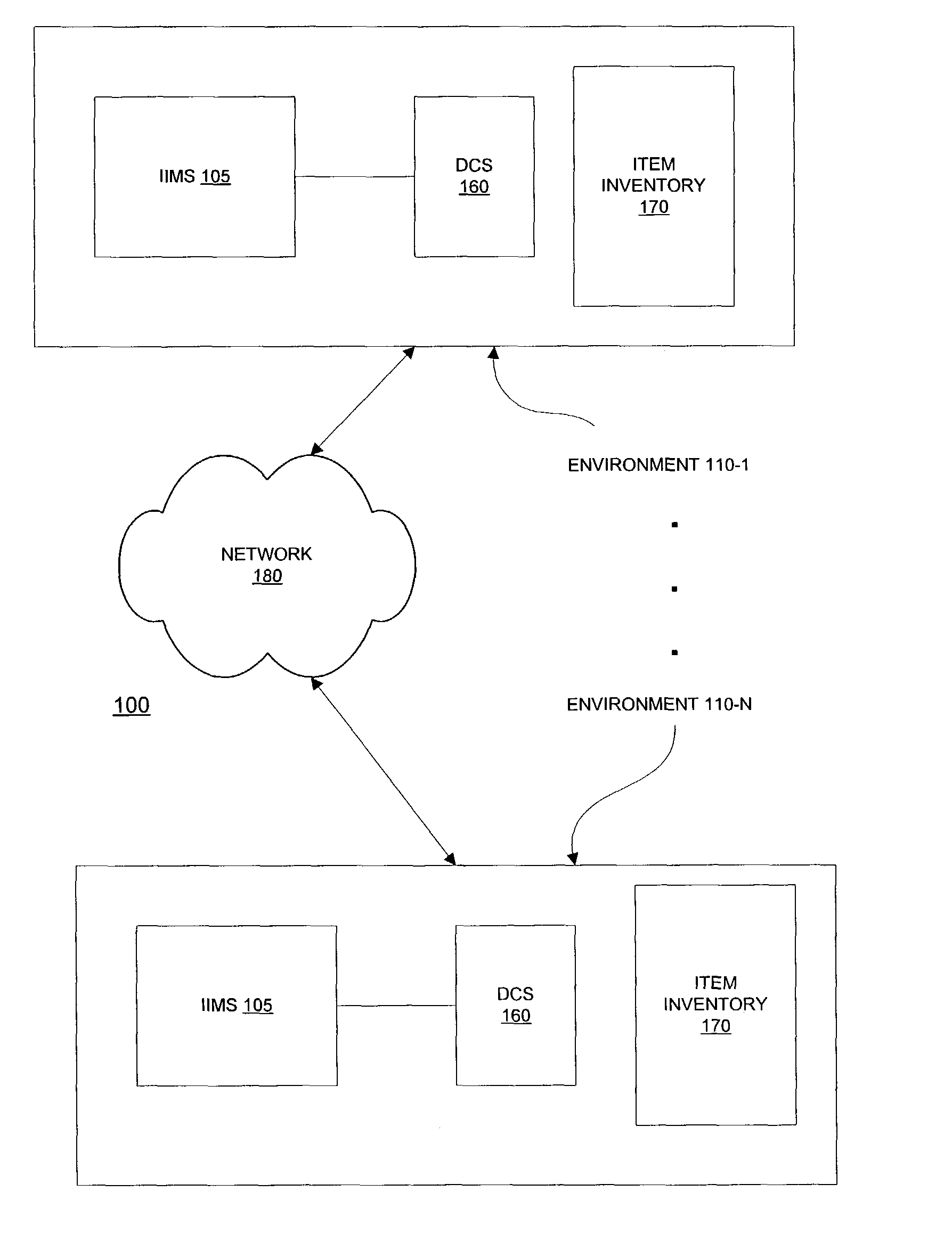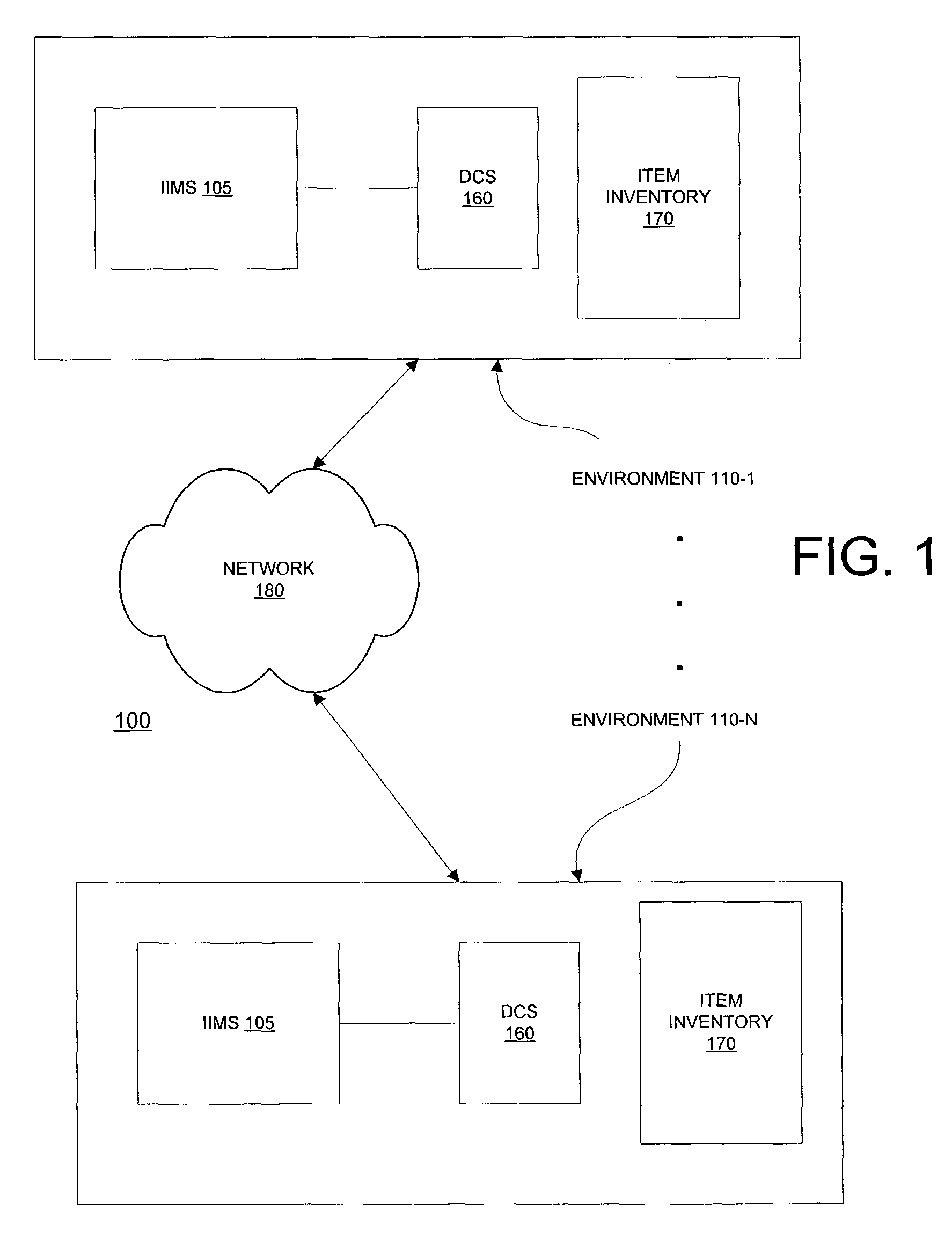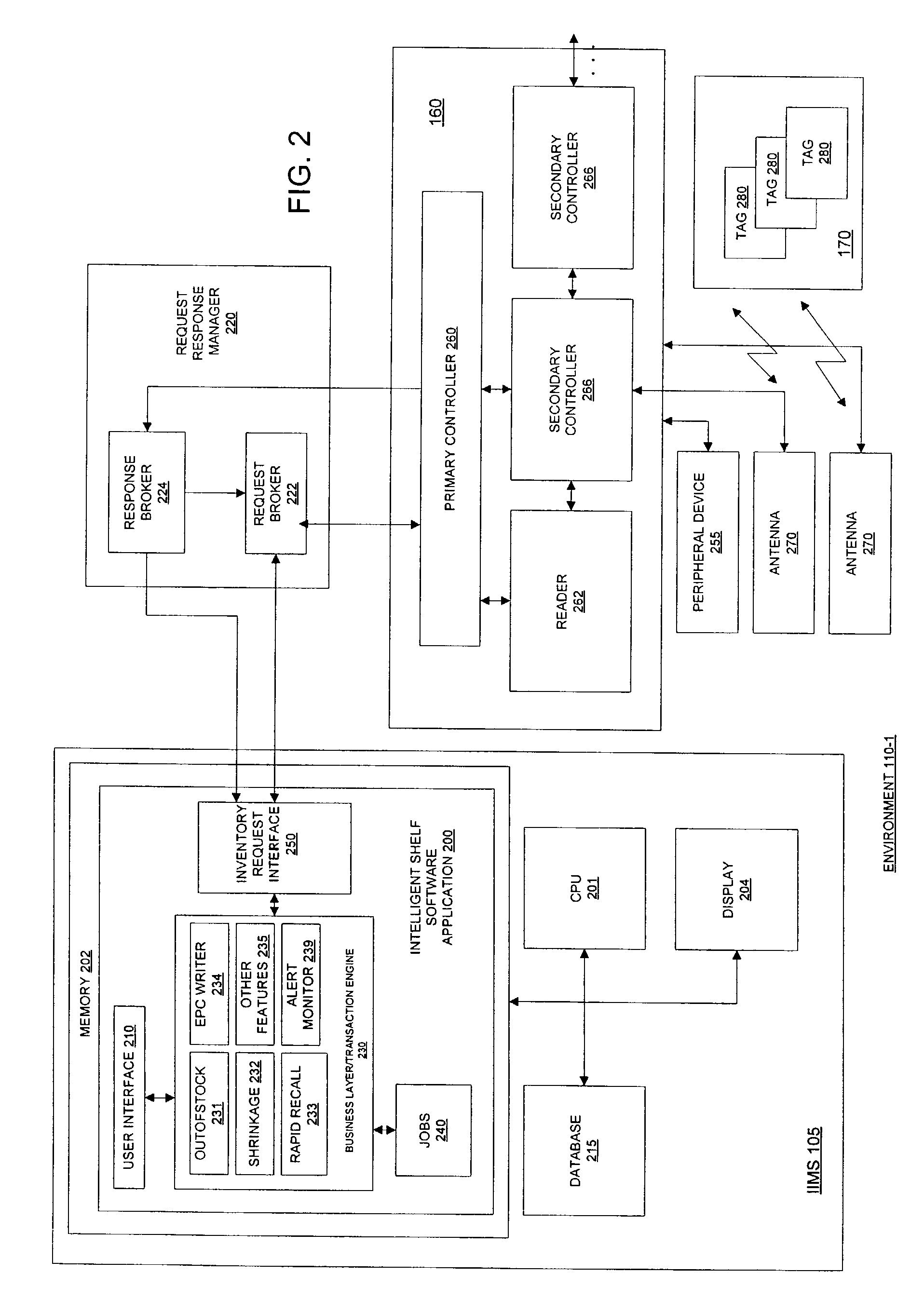Inventory management system
a management system and inventory technology, applied in the field of inventory management systems, can solve problems such as physical inventory, shrinkage at any point in the supply chain, and theoretical divergen
- Summary
- Abstract
- Description
- Claims
- Application Information
AI Technical Summary
Benefits of technology
Problems solved by technology
Method used
Image
Examples
Embodiment Construction
[0020]The following description of embodiments of this invention refers to the accompanying drawings. Where appropriate, the same reference numbers in different drawings refer to the same or similar elements.
Introduction
[0021]Systems and methods consistent with certain aspects related to the present invention enable an intelligent inventory management process to monitor and collect information associated with an inventory of items (e.g., products) included in an environment. An item, as the term is used herein, may be any type of product that is manufactured, developed, grown by a farm business, and provided by a manufacturer, business entity, individual, group of individuals, etc. For example, an item may be food (e.g., produce, dairy products, canned goods, etc.), an article of clothing, a plant or similar type of horticultural product, a machined part for an engine, sporting goods, etc. Further, an item may be associated with live animals or fish, such as livestock (e.g., cattle)...
PUM
 Login to View More
Login to View More Abstract
Description
Claims
Application Information
 Login to View More
Login to View More - R&D
- Intellectual Property
- Life Sciences
- Materials
- Tech Scout
- Unparalleled Data Quality
- Higher Quality Content
- 60% Fewer Hallucinations
Browse by: Latest US Patents, China's latest patents, Technical Efficacy Thesaurus, Application Domain, Technology Topic, Popular Technical Reports.
© 2025 PatSnap. All rights reserved.Legal|Privacy policy|Modern Slavery Act Transparency Statement|Sitemap|About US| Contact US: help@patsnap.com



